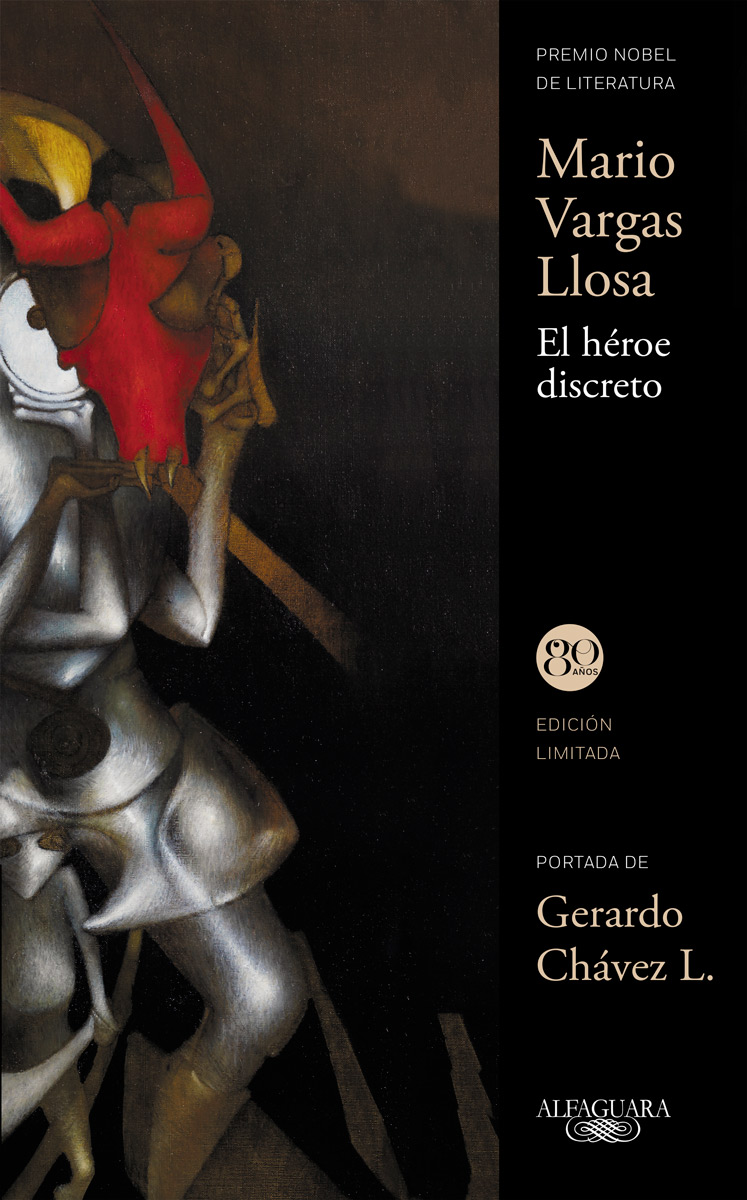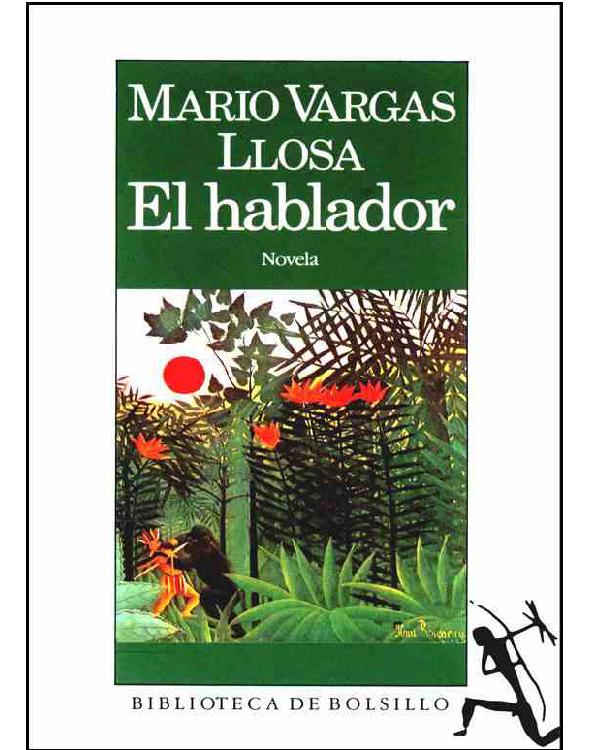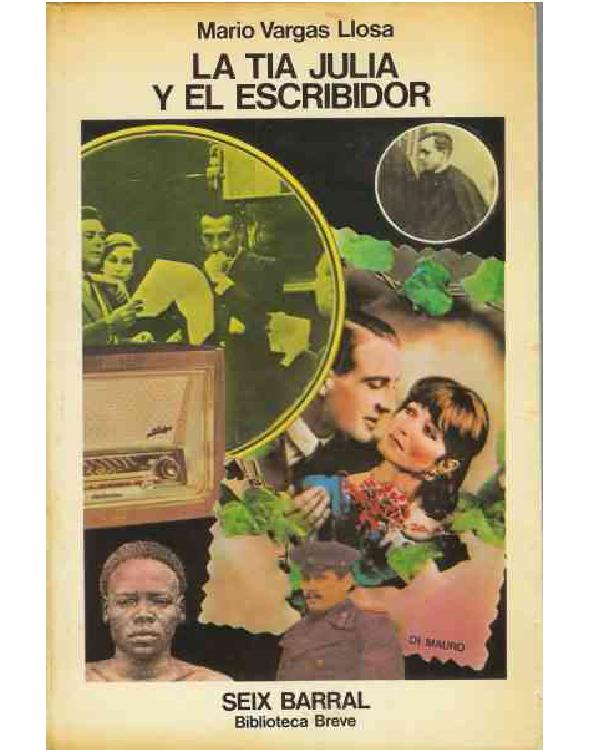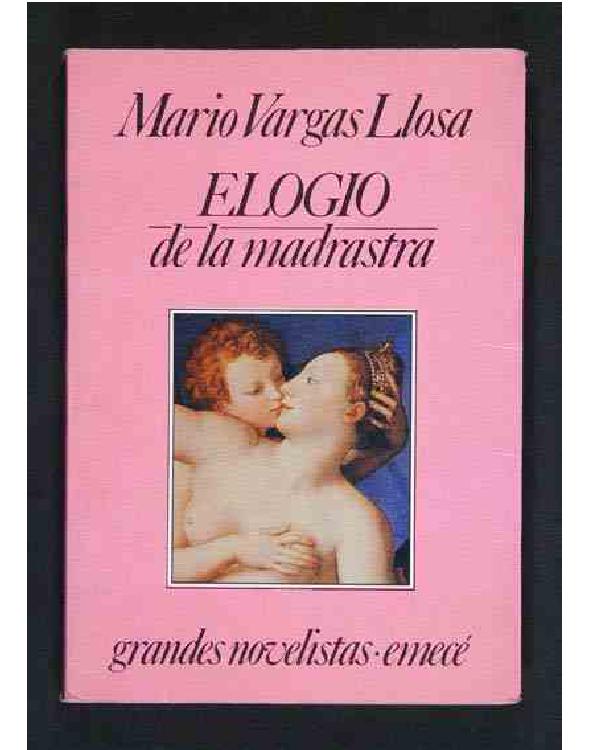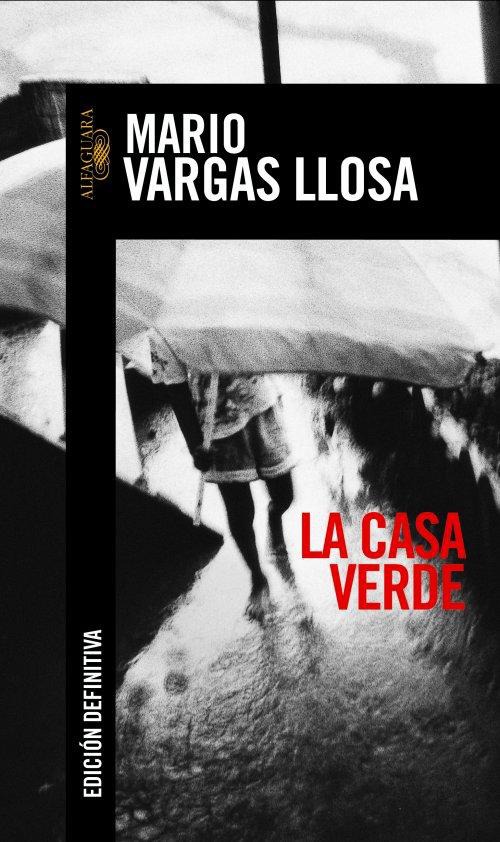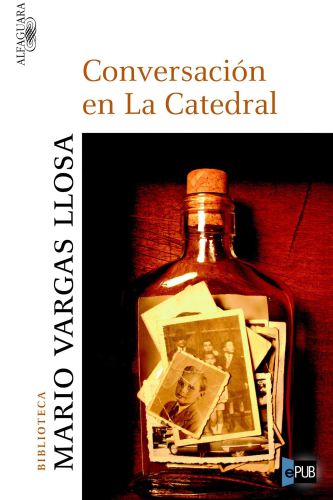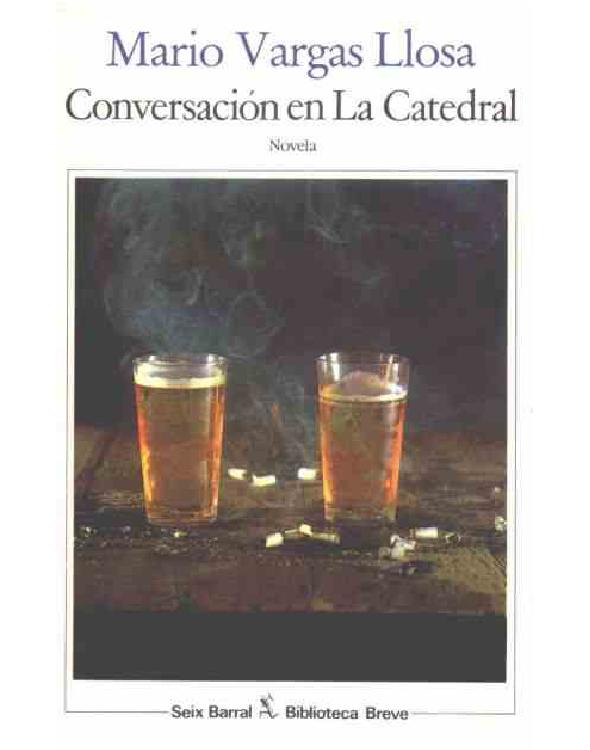oleebook.com
El Paraiso en la otra esquina de Llosa, Mario Vargas
de Llosa, Mario Vargas - GÃĐnero: Ficcion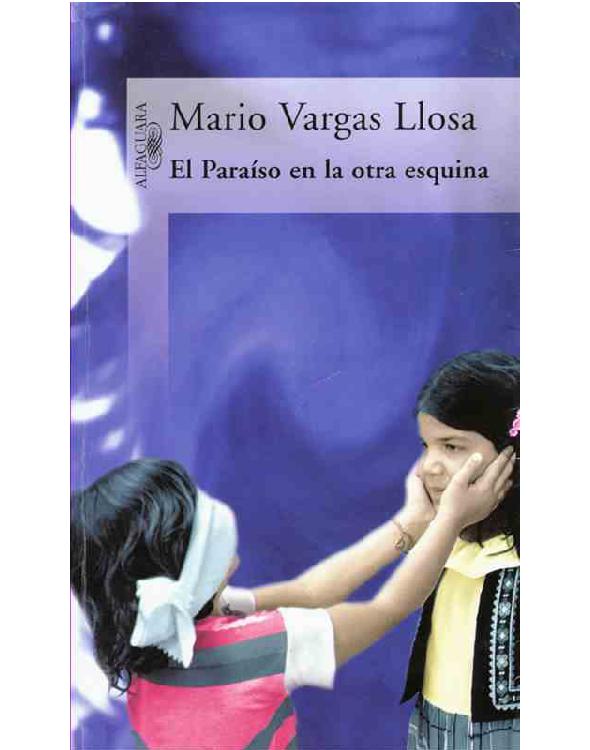
Sinopsis
Dos vidas: la de Flora TristÃĄn, que pone todos sus esfuerzos en la lucha por los derechos de la mujer y de los obreros, y la de Paul Gauguin, el hombre que descubre su pasiÃģn por la pintura y abandona su existencia burguesa para viajar a Tahità en busca de un mundo sin contaminar por las convenciones. Dos concepciones del sexo: la de Flora, que sÃģlo ve en ÃĐl un instrumento de dominio masculino y la de Gauguin, que lo considera una fuerza vital imprescindible puesta al servicio de su creatividad. ÂŋQuÃĐ tienen en comÚn esas dos vidas desligadas y opuestas, aparte del vÃnculo familiar por ser Flora la abuela materna de Gauguin? Esto es lo que Vargas Llosa pone de relieve en esta novela: el mundo de utopÃas que fue el siglo XIX. Un nexo de uniÃģn entre dos personajes que optan por dos modelos vitales opuestos que desvelan un deseo comÚn: el de alcanzar un paraÃso donde sea posible la felicidad para los seres humanos.
Libros Recomendados - Relacionados
ReseÃąas Varias sobre este libro
Whenever I see this novel on my shelf, I get that strange feeling reserved for rare pieces of fiction, that feeling of: "Yes, that is why we read, why we write, why we fight, why we paint, why we live!"
In an interconnected story, Vargas Llosa describes the lives of Gauguin and his grandmother fighting for art and for women's rights respectively. While using historical facts accurately and offering convincing psychological portraits of the two protagonists, the writer himself emerges in every line as well.
In Art History, it is sometimes claimed that each painter always paints him or herself, regardless of motive. And that may be true for fiction writing as well. To add to the mix, each reader or viewer always sees him or herself in the work of art, making the masterpiece a complex and accurate mirror of what is truly human in all of us, in the best and the worst possible definition.
Trying to get back to paradise through art, passion or justice is a futile, yet necessary journey which lasts from the moment an artist discovers creativity. The problem with paradise is that it is static, and will kill the spirit of creation, so in order to be able to stay artistic, the human being has to destroy paradise and look out for another goal to reach:
"For each man kills the thing he loves..."
Gauguin in Tahiti is a perfect example of that attitude. Escaping the artistic hell-paradise created in Provence with Van Gogh, he got the best and the worst out of life in a completely different environment, with the same dichotomy of suffering and bliss.
What do artists or activists to make a difference compared to calmer, less visible existences? They fight more, and therefore they live and suffer more. More life, more pain!
It is a good bargain if it makes them feel more alive. And whenever one looks at Gauguin's paintings, or reads Vargas Llosa's novels, one is quite happy that there are artists in the world!nobels98 s Michael FinocchiaroAuthor 3 books5,793
Another wonderful and perceptive piece of historical fiction from MVL, this time about the French painter Paul Gaugin and his grandmother Flora TristÃĄn. I had no idea that Gaugin was part-Peruvian and what a tragic but interesting life she led. The book is divided (as many of MVL's books including his autobiography) with alternate chapters dealing with Flora's life during her last few months and Paul/KokÃĐ's life towards the end of his life in Tahiti and the Marquesas Islands. The writing is - as always with MVL - judgement free and has fluid barriers between the present of the narrative and the past of the protagonist as they rummage through their memories. The narrator in both cases talks to Flora (sometimes as Florita or as Andalusa) and to Paul (or his Tahitian name KokÃĐ) as a friend or an intimate but never with judgement over their actions, just a wistful recollection of their successes and failures. I gained a profound new appreciation for Gaugin's work (although I am even more repelled by his pedophilia and his ego-centrism) and learned so much about his life and the colonial system in the French Pacific colonies (not un that which MvL described about Congo and Peru in Dream of the Celt or Brazil in The War at the End of the World). As for Flora, she was a badass to whom life was really a total shit-sandwich. That being said, the description of her trip to Arequipa and the civil war she witnessed were extraordinary prose.
Once again, MVL writes a compelling novel which talks about exploitation and oppression of natives and especially women in no uncertain terms and the result is readable and thought-provoking. Another awesome book by MVL.
This is one I will probably reread in English translation as this particular one I read in French.
Fino's Mario Vargas Llosa Reviews:
Fiction
The Cubs and Other Stories (1959) TBR
The Time of the Hero (1963)
The Green House (1966)
Conversation in the Cathedral (1969)
Captain Pantoja and the Special Services (1973)
Aunt Julia and the Scriptwriter (1977)
The War of the End of the World (1981)
The Real Life of Alejandro Mayta (1985)
Who Killed Palomino Molero? (1987)
The Storyteller (1989)
In Praise of the Stepmother (1990)
Death in the Andes (1996)
The Notebooks of Don Rigoberto (1998)
The Feast of the Goat (2001)
The Way to Paradise (2003)
The Bad Girl (2007)
The Dream of the Celt (2010)
The Discrete Hero (2015)
The Neighborhood (2018)
Harsh Times (2021) TBR
Non-Fiction
The Perpetual Orgy (1975)
A Fish Out of Water (1993)
Letters to a Young Novelist (1998)fiction historical-fiction nobel-lit ...more99 s Sawsan1,000
????? ????? ?? ???? ????? ?? ???????? ???????? ?? ????? ?????? ???
????? ??????? ??????? ?????? ??? ?????, ?????? ?? ??????? ?????? ????????
??? ???? ???? ???? ?????? ??????, ??? ????? ???? ????? ?? ??????? ????? ??
????? ??????? ????? ????? ???????? ?????? ??????? ?? ??? ??? ?????? ??? ??? ?? ???? ???? ?? ?????? ?? ??????
?? ????? ?????? ????????? ?? ??? ???? ?????? ???????, ???? ?????? ?????? ?????? ????? ????? ?????? ???? ?????, ???? ??????? ??????
???????? ????????? ???? ?? ?????? ??????? ??? ?????? ?????? ???????
??? ??? ????? ?????? ??????? ??? ???? ???? ??? ????? ???????, ???? ??? ?????? ????? ???? ?????? ???
????? ???? ?????? ?????? ????? ?? ?????? ??????? ????? ??????? ???? ??????? ???? ??????
??? ????? ???? ???? ?????? ??????? ????? ???? ?? ????? ???????? ????????
???? ??? ????? ????? ???????? ???? ?? ???? ?? ????? ????
????? ??? ??? ???? ????, ???? ??? ?? ?????? ?????? ????? ?? ???????, ????, ?????? ??????
???????? ??????? ??????????? ??????????? ??????? ?? ??? ?????
81 s Maziyar Yf586 334
?? ???? ???? ?? ??? ???? ? ???? ???? ?? ????? ?? ?????? ????? ??? ??????? ?? ?? ??? ?? ???? ? ???? ? ????? ??? ??????? ? ???????? ????? ?? ????? ??????? ? ???? ????? ?????? ???? ???? ? ????? ???? ??????? ? ??????? ???? ?? ????? ??????? ??????? ??????? ??? . ???????? ???? ?? ???? ?? ????? ???? ??? ?? ??? ?? ??? ? ?? ?????? ?? ????? ??? ??? .
???? ?? ??? ???? ?? ?? ???? ??? ????? ????? ???? ?? ???? ?? ??? ???? ??? ??? ??????? ?? ?? ?? ????????? ????? ?? ????? ??? ??? ?????? ? ????? ? ????? ?? ??????? ?? ??? ???? ?? ???? . ?? ????? ?? ?? ????? ???? ??????? ??? ????? ?? ?? ? ?????? ??? ?? ?? ?? ??? ??? ? ?? ??? ??? ??? ???? ??? . ??? ???? ????? ??? ?? ?? ??? ???? ??? ???? ??? ??? ?? ?????? ?? ???? ??? ?????? ?? ?? ??? ?? ??????? ???? ?? ???? .
???? ?? ??? ???? ? ???? ?????
?? ???? ????? ????? ????? ? ?????? ? ???? ?? ???? ????? ? ????? ?? ????? ??????? ? ?? ???? ?? ????? ??? ???? ?????? ????? ? ????? ?? ??? ???? ????? ????? ?? ?? ???? ????? ????? ????? ???? . ?? ?? ??? ????? ??? ????? ???? ?? ????? ???? ? ??? ???? ????? ???? ?? ???? ??? ????? ???? ???? ??? ??? .
???? ?? ?????? ? ???? ? ???? ??? ?????? ????? ??????? ?? ??? ???? ? ?? ?? ???? ?? ???? ?????? ???? ???? ???? ??????? ?? ?? ? ???? ??? ???? ?? ???? ? ?? ???? ?? ??? ???? ?????? ?? ???? ? ?? ????? ???? ?????? ??? ?? ?? ??????? ?? ????? ? ???? ???? ?? ??????? ??? ?? ??? . ?? ?? ??? ?? ??????? ????? ? ???? ? ???????? ? ????? ?????? ?? ?????? ?? ???? ?? ??? ?? ?? ?????? ???????? ?????? ????? ???? ? ?? ?? ??? ???? ???? ??? ?????? ????? ?? ??? ? ????? ?? ? ???? ??????? ??????? ?? 5 ??? ??? ?? ??????? ??????? ???? ????? ? ?????? ????? ????? ??? ??? ????? ???? ?? ???? ?????? ? ???????? . ???? ??????? ?? ?? ?? ?? ???? : ?? ????? ?????? ???? ?? ??? ? ?? ???? ???? ? ?? ?? ????? ??? ??? ???? . ?????? ?? ????? ????? ??? ??? ??? ?????? ? ???????? ? ???? ??????? ?? ????? ?? ? ??????? ?? ?? ?????? ?????? ?? ????? ?? ??? .
??? ???? ?????? ???? ???? ?? ???? ??? ????? ??????? ???? ?? ???? ????? ? ???? ??? ?????? ?? ????? ????? ?? ?? ???? ???? ???? ???? ???? . ?? ???? ?? ?? ????? ????? ????? ?? ??????? ????? ???? ? ?? ????? ?? ??? ?? ??? ??? ?? ?? ???? ??? ???? ? ????? ??? ??? ???? ????? ? ????? ????? ???? ???? ? ?? ????? ?? ????? ? ??????? ?????????? ??? ? ???? ??? ?? ?? ????? ????? ???? ???? ?????? Â ????? ???? ??? ??????????? ???? ??? ?? ???? ??? ???? ??? ??????????? ?? ????? ??? ?? ???? ??? ????? ???? .
???? ?? ?????? ??? ??? ??? ????? ?? ????? ? ??? ??? ???? ????? ???? ??? ????? ? ???? ??? ?? ?? ???? ?? ??? ???????? ???? ????? . ?? ?? ???? ??? ???? ????? ????? ?? ???? ??? ?? ????? ? ?? ????? ????? ??????? ? ????? ?? ??? ????? ??? ???? ?? ??? ???? ? ?? ??? ? ???? ?? ??????? ?? ???? ???????? ????? ???? ?? ?? ???? ?? ???? ?? ?? ?? ?? ???? ??? ???? ? ???? ???? ???? ????? ? ??????? ?????? ???? ???? ???? ????? ????? ???? ?? ???? ?? ???????? ? ?? ?????? ????? ??? ? ?? ?? ?? ?????? ? ?? ??? ????????? ??????? ?? ??? ??????? ? ??? ????? ?? ?? ???? . ??? ?????? ????? ???????? ???? ?? ?? ??? ????????? ???? ?????? ????? ???? ???? ? ???? ???? ??? ? ?????? ????? ??? ??? ?? ???? ???? ???? ?? ??? ????? ??? ? ?? ??? ???? ??? .
?????? ?? ????? ????? ???? ???? ?? ??????? ???? ???? ? ?? ??? ? ???? ????? ?? 9 ???? ?? ?? ?? ???? ?? ????? ?? ?????? . ???? ?? ???? ?? ?? ??? ?? ??? ????? ?????? ??? ???? ? ???? ??? ? ??? ? ???? ?? ??? ?? ?????? ?? ???? ? ??? ?????? ???? ?? ???? ?? ???? ?????? ?? ???? ????? ? ?????? ???? ? ?? ???? ???? ??? . ???? ??? ???? ?? ?? ??? ?? ???? ??? ????? ??????? ???? ?? ??? ? ????? ??? ?? ?? ?? ????? . ?? ?? ??? ??? ????? ??? ??? ????? ??????? ?? ???? ?? ??? ??? ????? ??? ??? ?????? ???????? ??? ?? ????? ???? ?? ???? ?? ??? ?? ?? ???? ???? ? ?? ??? ?? ?? ????? ??? ?? ???? ?? ??? .
?? ?? ?? ?? ??? ?? ???? ???? ?? ????? ????? ??? ????? ? ?? ?? ?? ???? ? ???? ? ???? ?????? ?? ?????? ? ?? ?? ????? ???? ???? ? ?? ??????? ?? ???? ?? ???? ??? ? ???? ???? ? ???? ?????? ???? ????? ? ?? ?? ?? ?? ???? ????? . ?? ??? ?? ????? ???? ???? ?? ?? ?????? ???? ??? ? ???? ?? ??????? ????? ?????? ???? ?? ?????? ? ????? ?? ?? ??? ???? ??? .
????? ??? ???? ?? ????? ????? ?? ???? ? ??? ? ?????? ? ????? ?????? ????? ???? . ?? ????? ??? ? ?????? ? ??????? ???????? ????? ??? ? ????? ??????? ?? ?? ?????? ???? ??? ??? ???? ?? ???? ? ??? ????? ?? ???? ?? ?????? . ????? ?? ????? ??? ????? ???? ?????? ????? ?????? ? ?????? ????? ???? ? ?????? ?? ????? ???? ???? ?? ?? ?? ???? ? ??? ??????? ?? ????? ??? ? ??? ?? ??? ?? ???? ?? ????? ??????? ?????? ?? ?? ? ??? ????? ??? .
?? ???? ?? ?? ???? ???? ?? ?? ??? ????? ?? ???? ???? ?? ??? ???? ? ?? ???? ??? ? ?? ??? ?? ?????? ???? ? ???? ????? ???? ????? ?? ?? ????? ?????? ?? ???? ????? ?? ???? ????? ??? . ???? ?? ??? ???? ?? ??? ??? ? ?? ????? ?? ????? ?? ????? ???? ????? ???? ????? ??? ? ????? ?? ?? ??? ???? ?? ????? ??? ????? ??????? ????? ?? ????????? ???? ???? ?? ????? ?? ????? ????????? ?????? ??? ??? ????? ?? ???? ????? ???? ????? ????.m-v-llosa46 s LuÃs2,044 803
It is not one, but two biographies that Vargas Llosa offers us in this promise of Paradise, which always slips away a little further in front of the superhuman ambitions of its two protagonists: on the one hand Paul Gauguin at the turn of the century, threw his bourgeois life overboard for a problematic crossing towards his true nature as an artist and the search for a primal art; on the other, Flora Tristan her grandmother, who fifty years earlier also rejected conjugal slavery with an act of courage that commands respect for the time, and threw all her strength into a political fight for utopian socialism bringing together women and workers in the exact cause.
These two will never meet, but many bridges connect them: their idealism, their anti-conformism, and the strength of their faith in their vocation.
The novel alternates chapters dedicated to one and the other. For both of them, I had great pleasure in living this augmented reading experience, either by the image to discover Gauguin's Tahitian paintings one by one or by the text to learn Fourierism, the Saint-Simonians, and all these romantic social currents that marked the De Balzac era when lawless capitalism dominated European bourgeois societies, now the peoples in abject poverty.
I learned a lot and vibrated with these two incandescent beings that the author animates with a tremendous romantic breath in this book, bursting with colors and hot as embers.2023-readings art e-4 ...more43 s Mary SoderstromAuthor 21 books73
Before you start this book, find a big coffee table book of Paul Gauguin's art to use as a reference as you read, or read it next to your internet link so you can check out Gauguin's paintings.
This historical novel by Peruvian Nobel laureate Mario Vargas Llosa brings up big questions about genius and committment. The book alernates between sections about French artist Paul Gauguin and his grandmother Flora Tristan, a feminist and labour organizer int he early 19th century. Both are driven people: Gauguin by a passion to find and depict a mythic paradise, and Tristan, by overwhelming desire to right the world's wrongs, beginning with laws that at the time gave women no rights at all.
The book is long, and can be hard to get into: in the book discussions I've led about it, opinion is varied, although by the end of the discussion nearly everyone is glad to have read it.
The reference to "paradise"in the title comes from a children's game that both the main characters know as children. In it, the person who is it must guess where paradise is hidden among the other players, but nearly always it is "a little further on." Certainly both Gauguin and Tristan made seeking paradise their life's work. Whether they found it, is up to the reader to decide. Whether the damage they do to the people around them in persuit of their passions is worth their accomplishment is maybe even a more important question.37 s Tony950 1,668 Read
It was a game they played, in Peru, when Paul Gauguin was just a boy. A curly-headed boy in short pants and a smock, running in a circle of cousins and other children from the neighborhood, asking one and then another, "Is this the way to Paradise?" They would always reply, "No, try the next corner, sir; ask there." And they would titter, trade places. This remembrance, on Gauguin's deathbed, serves. There is an instinct within us for Paradise; yet Paradise remains elusive.
Perhaps that is the theme of this binary historical fiction (duh, it's the title). In alternating chapters, Vargas Llosa tells the stories of Flora TristÃĄn, early feminist writer and social reform activist, and her grandson, the artist Paul Gauguin. The reader is challenged because except for the ancestry, the two figures do not seem to have much in common. Gauguin, at least in deed, was no feminist; and he would have been the kind of mate that TristÃĄn would have fled from, as she did indeed.
But in Tahiti, when Gauguin was at his most fractious, rejecting the reason of friends, abrasive to every authority, people would rub their chins and say, "Just Grandma." That agitator in skirts would be applauding. Neither played nice. TristÃĄn saw injustice, abominable working conditions, the oppression of women, and determined to change things. To that end, she abandoned family, and went on a crusade. Gauguin, a successful stockbroker, felt a mid-life calling to art. He too abandoned family, and led, as he put it, the life of a savage in order to find the color, to create. Two different kinds of Paradise: an equality on Earth and a Place of sublime beauty and inspiration. Each one elusive.
Vargas Llosa does not always do historical fiction well. I d The Feast of the Goat about Trujillo but could not have been more disappointed in The Dream of the Celt about Roger Casement. Here he jumps between the third-person and the second-person, speaking directly to the character. This annoyed less than I thought. He managed, however, to make the stories muted somehow. One more workers meeting with TristÃĄn; one more day being told whether Gauguin's syphilitic leg sores were more or less painful. You can wonder if you will be as famous after your death as that Crazy Dutchman became after his, but don't keep wondering it.
The book had moments though. There's a brief vignette, surely invented, of TristÃĄn meeting Karl Marx at a publisher's printing office. It's priceless. What's a "capon", Marx asks her in reply. And back to Gauguin's deathbed where he asks a friend whether he has read Flaubert's SalammbÃī and quotes that first sentence: CÂÃĐtait à MÃĐgara, faubourg de Carthage, dans les jardins dÂHamilcar.
And maybe the best experience in the reading was looking up the paintings cited. For instance:
I started my own little journey, asking is this the way, not in Polynesia but in Korea where a young man wandered, with The Moon and Sixpence in his backpack, and so went there next. Then necessarily, here. I tried to think back, now, to see if there was some explicit connection between the books. And I wonder at the loneliness of the seeker. Try another corner, sir.art onebookleadstoanother peruvian21 s Kuszma2,392 193
PÃĄrhuzamos ÃĐletrajzok.
El?szÃķr is bemutatnÃĄm Flora Tristant, aki a XIX. szÃĄzad derekÃĄn ÃĄllt neki megvÃĄltani a vilÃĄgot. Csak hÃĄt a MegvÃĄltÃģk esetÃĐben kifejezetten hendikeppnek min?sÞlt, ha szoknyÃĄban gyÞrk?ztek az effÃĐle fÃĐrfias feladatoknak. RÃĄadÃĄsul Flora ezt a megvÃĄltÃĄst a szegÃĐnyek felkarolÃĄsÃĄval kÃvÃĄnta elÃĐrni, MunkÃĄsszÃķvetsÃĐgek megalakÃtÃĄsÃĄt propagÃĄlta, amelyeken keresztÞl holmi proletÃĄr utÃģpiÃĄt akart megvalÃģsÃtani. No most mÃĄr akkoriban is Úgy volt, hogy mindenki marhÃĄra keresztÃĐnynek vallotta magÃĄt, de ezt Ãķsszeegyeztethet?nek tartottÃĄk azzal, hogy az empÃĄtiÃĄt meg a szolidaritÃĄst valami ÃķrdÃķgt?l valÃģ dolognak tekintsÃĐk, hirdet?it pedig lendÞletb?l lekomcsizzÃĄk. SzÃģval Flora is kap hideget-meleget. De kemÃĐny csaj, bÃrja. Nem hÃĄtrÃĄl meg, kÞzd az igazsÃĄgÃĐrt, kompromisszumok nÃĐlkÞl. Ãn bÃrom. Ahogy Vargas Llosa is. Az elkÃĐpzelÃĐseit bizonyos tekintetben naivnak, megvalÃģsÃthatatlannak tartom, de lÃĐnyegileg egyetÃĐrtek vele: egy olyan kÃķzÃķssÃĐg, ahol a kÃķzÃķssÃĐg szerencsÃĐsebb tagjai megalÃĄzzÃĄk, kihasznÃĄljÃĄk ÃĐs szenvedÃĐsre ÃtÃĐlik a kevÃĐsbÃĐ szerencsÃĐseket, nem ÃĐrdemli meg a kÃķzÃķssÃĐg nevet. Ha egy nemzet Ãgy kÃĐpzeli el a rendet, akkor inkÃĄbb ne is legyen. Sz?njÃķn meg, fÚjja el a tÃķrtÃĐnelem szele. Vargas Llosa rÃĐszvÃĐttel ÃĐs energikusan vezet minket vÃĐgig e bÃĄtor asszony ÃĐletÃĐn, mikÃķzben gyorstalpalÃģt tart az 1840-es ÃĐvek munkÃĄsmozgalmaibÃģl ÃĐs utÃģpistÃĄibÃģl, ami egy bizonyos olvasÃģi rÃĐtegnek talÃĄn unalmas lesz, mÃĄsokban pedig esetleg rossz emlÃĐkeket ÃĐbreszt, de ett?l fÞggetlenÞl er?s, megkapÃģ szÃķveg. Engem arra kÃĐsztetett, hogy hÃĄlÃĄt ÃĐrezzek Flora irÃĄnt. Mert amivel ? szembeszÃĄllt, az egy borzasztÃģ vilÃĄg volt. Ha a fÃĐrfi a nyÃlt utcÃĄn verte bucira a felesÃĐgÃĐt, hivatkozhatott arra, hogy ez tÃķrvÃĐny adta joga, ha pedig meger?szakolta a sajÃĄt kiskorÚ gyerekÃĐt, az legfeljebb aprÃģ botlÃĄsnak, magÃĄnÞgynek min?sÞlt. A gyÃĄrosok minden tovÃĄbbi nÃĐlkÞl a hÚst is lezabÃĄlhattÃĄk a munkÃĄsaikrÃģl, az ÃĄllam pedig nem ÃĐrezte kÃķtelessÃĐgÃĐnek, hogy polgÃĄrait megmentse az ÃĐhenhalÃĄstÃģl. Az, hogy mindez a XX. szÃĄzadra nÃĐmikÃĐpp megvÃĄltozott, az olyan rohadt bÃĄtraknak kÃķszÃķnhet?, mint Flora.
(Hadd jegyezzem meg: megszoktuk, hogy ez az ÃĄllapot ÃĄllandÃģ. SzÃvat ugyan a f?nÃķk, de azt azÃĐrt mÃĐgsem teheti meg, hogy indoklÃĄs nÃĐlkÞl felÃĐre csÃķkkenti a fizunkat, vagy nulla vÃĐd?felszerelÃĐssel bekÞld valami mÃĐrges g?zbe dolgozni, ami egy ÃĐven belÞl szÃĐtmarja a tÞd?nket. Mert van Munka TÃķrvÃĐnykÃķnyve. Ha farigcsÃĄljÃĄk is. Hisz farigcsÃĄljÃĄk. Mert akinÃĐl a pÃĐnz van, az folyton farigcsÃĄlni akarja azoknak a jogÃĄt, akikt?l mÃĐg tÃķbb pÃĐnzt prÃĐselhet ki. EzÃĐrt szÞksÃĐg van id?nkÃĐnt azokra a bÃĄtrakra, akik hangosan, jÃģl artikulÃĄlva kimondjÃĄk, hogy ez Ãgy nem jÃģ, bÃĄtya. Akik belefeszÞlnek, ÃĐs tesznek valamit. SzÃģval akÃĄrmennyire is berzenkedik valaki az effÃĐle radikÃĄlis szocialista aktivistÃĄktÃģl, gondoljon bele, a hozzÃĄjuk hasonlÃģ arcok neki is el?kÃĐszÃtettÃĐk mindazt, ami ma evidens, de 150 ÃĐve mÃĐg elkÃĐpzelhetetlennek t?nt. Amikor azt hallja, ÂszocializmusÂ, ne rÃķgtÃķn Leninre meg SztÃĄlinra gondoljon, hanem Flora Tristanra is, meg utÃģdaira, akik elintÃĐztÃĐk neki, hogy a munkanapja ne hÚsz, hanem csak nyolc ÃģrÃĄs legyen. Nem kell szocialistÃĄnak lenni, Isten ments, ÃĐn se vagyok az, de fogadja el, hogy az ? hangjukra is bizony szÞksÃĐg van a tÃķbbi hang mellett.)
Na de hagyjuk a politikÃĄt. BeszÃĐljÞnk inkÃĄbb az impresszionistÃĄkrÃģl. Gauguinr?l mondjuk. Mert ? e pÃĄrhuzamos ÃĐletrajz mÃĄsik fele. Na ?kelmÃĐt nem kÃvÃĄnom hosszasan bemutatni, rÃĐgi ismer?sÞnk. Otthagyott csapot-papot, ÃĐs elment PolinÃĐziÃĄba vadembernek, hogy kiteljesedjen. Llosa irÃĄnta is felÃĐbreszti bennÞnk a szÃĄnalmat, de azÃĐrt leszÃķgeznÃĐm, ha Gauguin az edÃĐny, ami a nagyszer? m?vÃĐszetet hordozza, akkor ez a nagyszer? m?vÃĐszet vÃĄlaszthatott volna tisztÃĄbb tÃĄrolÃģeszkÃķzt is magÃĄnak. De hÃĄt ilyen a m?vÃĐszet: kifÞrkÃĐszhetetlenek az Útjai. Mert hÃĄt igazÃĄn csecse dolog fittyet hÃĄnyni a konvenciÃģknak, ÃĐs tÃķkig elmerÞlni a szabadsÃĄgban, de amikor mÃĄr a konvenciÃģk felrÚgÃĄsa a pedofÃlia formÃĄjÃĄt Ãķlti, akkor ott ÃĐn mÃĄr megtorpannÃĐk. Ãs bizony Gauguin simÃĄn ÃĄtlÃĐpi ezt a hatÃĄrt. OkÃĐ, Tahitin mÃĄsok a szokÃĄsok, ÃĐs minden kultÚra egyenÃĐrtÃĐk?, de azÃĐrt attÃģl mÃĐg, hogy polinÃĐznek vallod magad, mÃĐg nem lesz kevÃĐsbÃĐ ocsmÃĄny, amit teszel, kedves Paul. Ãs hÃĄt nem tudsz annyi fasza kÃĐpet festeni, hogy efÃķlÃķtt szemet hunyhatnÃĐk. ArrÃģl ne is beszÃĐljÞnk, hÃĄny lÃĄnyt fert?ztÃĐl meg a nemi bajoddal. Komolyan, hogy gondoltad ezt?
A szÃķveg milyensÃĐgÃĐr?l nincs mit mondani. Tiszta, profi munka, kvÃĄzi semlegessÃĐgÃĐben tÃķkÃĐletes eszkÃķz arra, hogy Llosa elmondja, amit akar. Ãs ? kÃĐt emberr?l kÃvÃĄn beszÃĐlni, akikben az a kÃķzÃķs, hogy egy ideÃĄÃĐrt odadobtak mindent, karriert, csalÃĄdot*, egy normÃĄlis ÃĐlet ÃgÃĐretÃĐt. MegfizettÃĐk az ÃĄrÃĄt, mindketten id? el?tt haltak meg, Flora Tristan bÃĐlgyulladÃĄsban, amit sÚlyosbÃtott egy testÃĐben hordozott ki nem operÃĄlt golyÃģ is, Gauguint pedig a ÂnÃĐven nem nevezhet? betegsÃĐg, a szifilisz falta fel lÃĐpÃĐsr?l lÃĐpÃĐsre. Llosa mindkettejÞk dÃķntÃĐsÃĐt bÃĄmulatosnak tartja, olyasminek, ami mÃĐltÃģ az ÃrÃģi fantÃĄzia alapanyagÃĄul, ezt pedig azzal is jelzi, hogy lÃĐpten-nyomon megszÃģlÃtja ?ket a szÃķvegben, mintha nem tudna ellenÃĄllni annak, hogy szemÃĐlyes ismer?seivÃĐ vÃĄltoztassa ?ket. MegÃĐrtem ezt a kÃĐsztetÃĐst, mert valÃģban, nagyon impozÃĄns ÃĐletutakrÃģl van szÃģ. Olyan ÃĐletutakrÃģl, amelyek tragÃĐdiÃĄtÃģl szaglanak, hisz mind Flora, mind Paul kÃnok kÃķzt halt meg, ÃĐs amikor lehunytÃĄk szemÞket, kÃķnnyen hihettÃĐk: kudarcot vallottak, ideÃĄjuk megcsalta ?ket. De Ãgy vagy Úgy, halÃĄluk utÃĄn ÃķrÃķksÃĐgÞk virÃĄgot bontott. NyilvÃĄn ?k ebb?l aligha profitÃĄltak, legfeljebb mi. Hogy ennek fÃĐnyÃĐben megÃĐrte-e nekik ezt az utat vÃĄlasztani, azt mindenki dÃķntse el magÃĄnak.
* Mondhatni, mindketten kÃķvetkezetesen alkalmaztÃĄk a jÃĐzusi ukÃĄzt, miszerint hagyd ott a csalÃĄdot, ha kÃķvetni akarsz. HÃĄt ?k otthagytÃĄk. Vissza se nÃĐztek.19 s Loredana (Bookinista08)643 249
Ãn sfÃĒr?it! Am reu?it s? termin cartea asta! Lung travaliu.
Autor del comentario:
=================================
